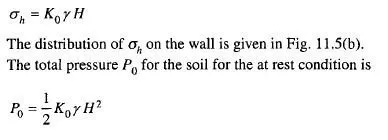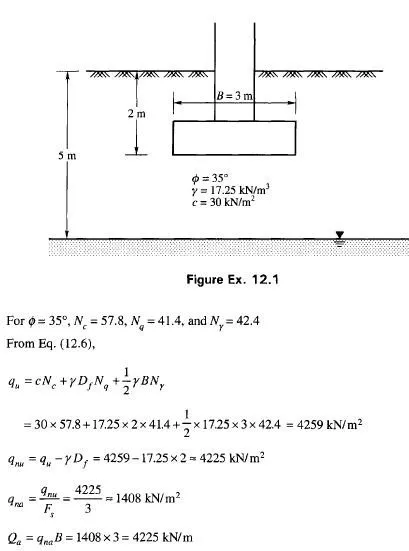If the wall is rigid and does not move with the pressure exerted on the wall, the soil behind the wall will be in a state of elastic equilibrium. Consider a prismatic element E in the backfill at depth z shown in Fig. 11.5.
Element E is subjected to the following pressures.
![]()



The expression for oh at depth H, the height of the wall, is


The value of KQ depends upon the relative density of the sand and the process by which the deposit was formed. If this process does not involve artificial tamping the value of KQ ranges from about 0.40 for loose sand to 0.6 for dense sand. Tamping the layers may increase it to 0.8. The value of KQ may also be obtained on the basis of elastic theory. If a cylindrical sample of soil is acted upon by vertical stress CT, and horizontal stress ah, the lateral strain e{ may be expressed as



